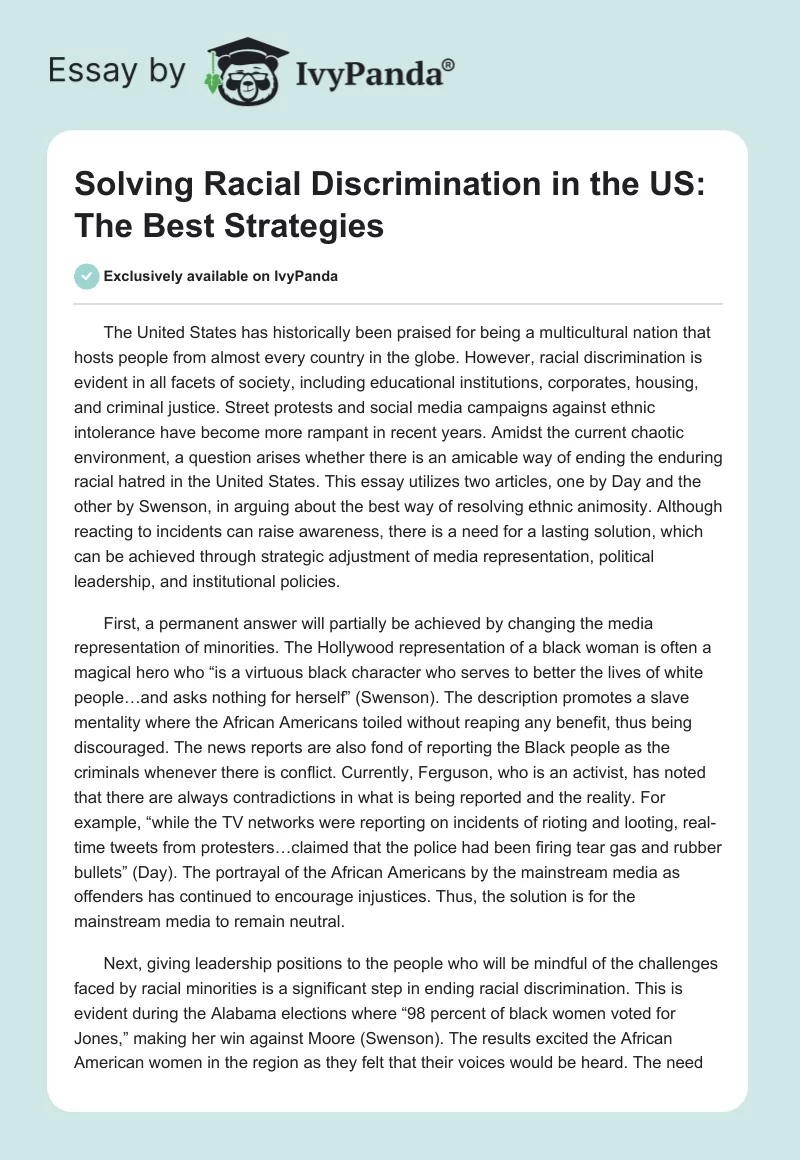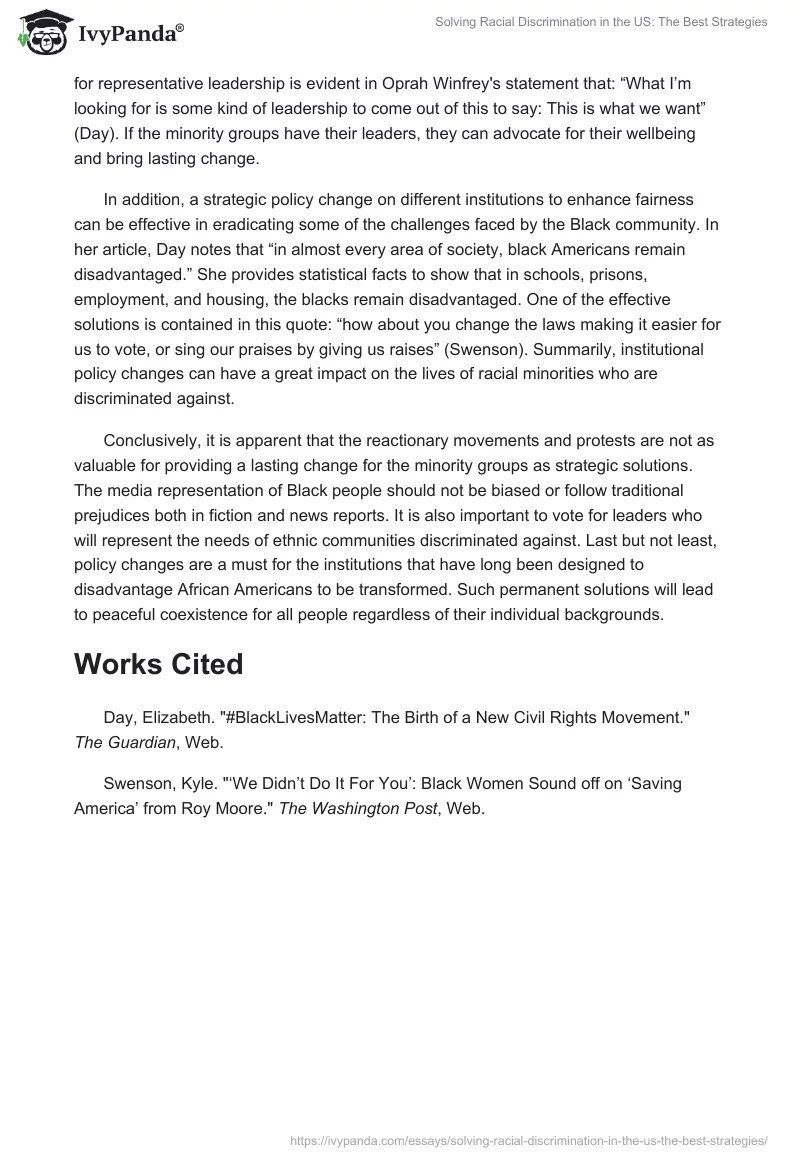The United States has historically been praised for being a multicultural nation that hosts people from almost every country in the globe. However, racial discrimination is evident in all facets of society, including educational institutions, corporates, housing, and criminal justice. Street protests and social media campaigns against ethnic intolerance have become more rampant in recent years. Amidst the current chaotic environment, a question arises whether there is an amicable way of ending the enduring racial hatred in the United States. This essay utilizes two articles, one by Day and the other by Swenson, in arguing about the best way of resolving ethnic animosity. Although reacting to incidents can raise awareness, there is a need for a lasting solution, which can be achieved through strategic adjustment of media representation, political leadership, and institutional policies.
First, a permanent answer will partially be achieved by changing the media representation of minorities. The Hollywood representation of a black woman is often a magical hero who “is a virtuous black character who serves to better the lives of white people…and asks nothing for herself” (Swenson). The description promotes a slave mentality where the African Americans toiled without reaping any benefit, thus being discouraged. The news reports are also fond of reporting the Black people as the criminals whenever there is conflict. Currently, Ferguson, who is an activist, has noted that there are always contradictions in what is being reported and the reality. For example, “while the TV networks were reporting on incidents of rioting and looting, real-time tweets from protesters…claimed that the police had been firing tear gas and rubber bullets” (Day). The portrayal of the African Americans by the mainstream media as offenders has continued to encourage injustices. Thus, the solution is for the mainstream media to remain neutral.
Next, giving leadership positions to the people who will be mindful of the challenges faced by racial minorities is a significant step in ending racial discrimination. This is evident during the Alabama elections where “98 percent of black women voted for Jones,” making her win against Moore (Swenson). The results excited the African American women in the region as they felt that their voices would be heard. The need for representative leadership is evident in Oprah Winfrey’s statement that: “What I’m looking for is some kind of leadership to come out of this to say: This is what we want” (Day). If the minority groups have their leaders, they can advocate for their wellbeing and bring lasting change.
In addition, a strategic policy change on different institutions to enhance fairness can be effective in eradicating some of the challenges faced by the Black community. In her article, Day notes that “in almost every area of society, black Americans remain disadvantaged.” She provides statistical facts to show that in schools, prisons, employment, and housing, the blacks remain disadvantaged. One of the effective solutions is contained in this quote: “how about you change the laws making it easier for us to vote, or sing our praises by giving us raises” (Swenson). Summarily, institutional policy changes can have a great impact on the lives of racial minorities who are discriminated against.
Conclusively, it is apparent that the reactionary movements and protests are not as valuable for providing a lasting change for the minority groups as strategic solutions. The media representation of Black people should not be biased or follow traditional prejudices both in fiction and news reports. It is also important to vote for leaders who will represent the needs of ethnic communities discriminated against. Last but not least, policy changes are a must for the institutions that have long been designed to disadvantage African Americans to be transformed. Such permanent solutions will lead to peaceful coexistence for all people regardless of their individual backgrounds.
Works Cited
Day, Elizabeth. “#BlackLivesMatter: The Birth of a New Civil Rights Movement.” The Guardian, Web.
Swenson, Kyle. “‘We Didn’t Do It For You’: Black Women Sound off on ‘Saving America’ from Roy Moore.” The Washington Post, Web.


